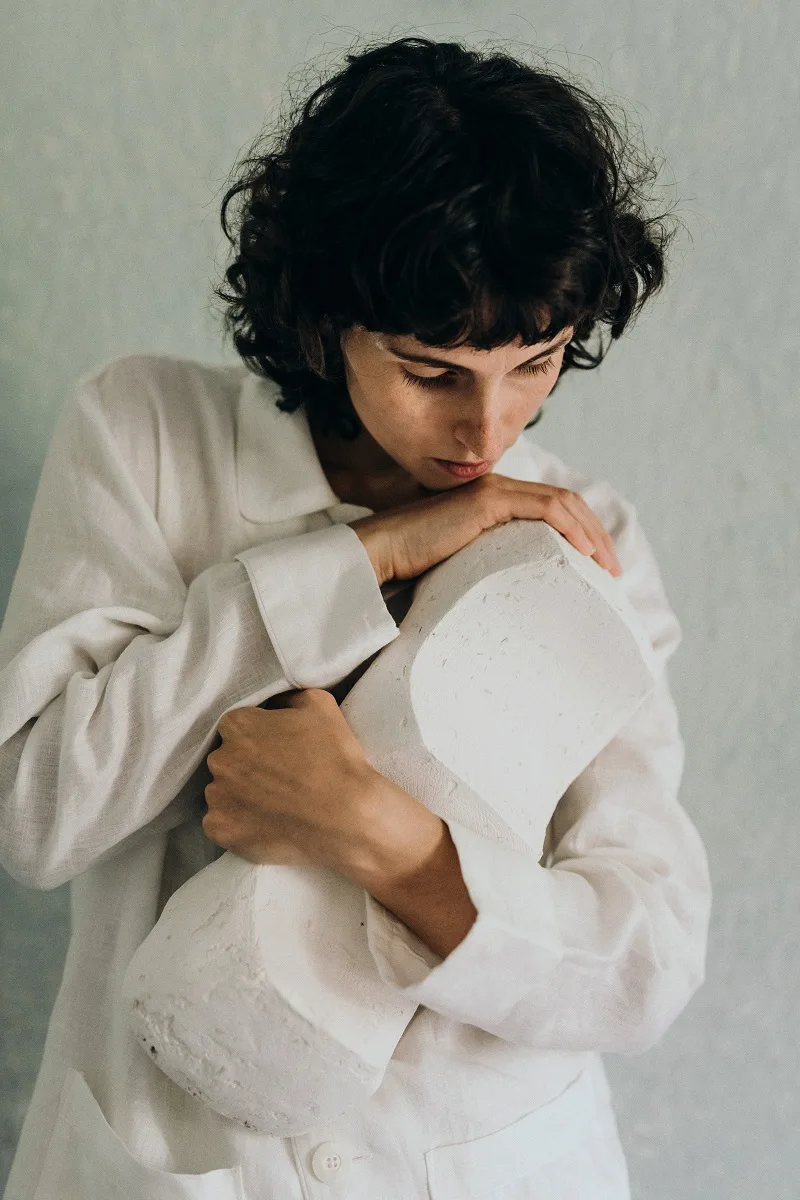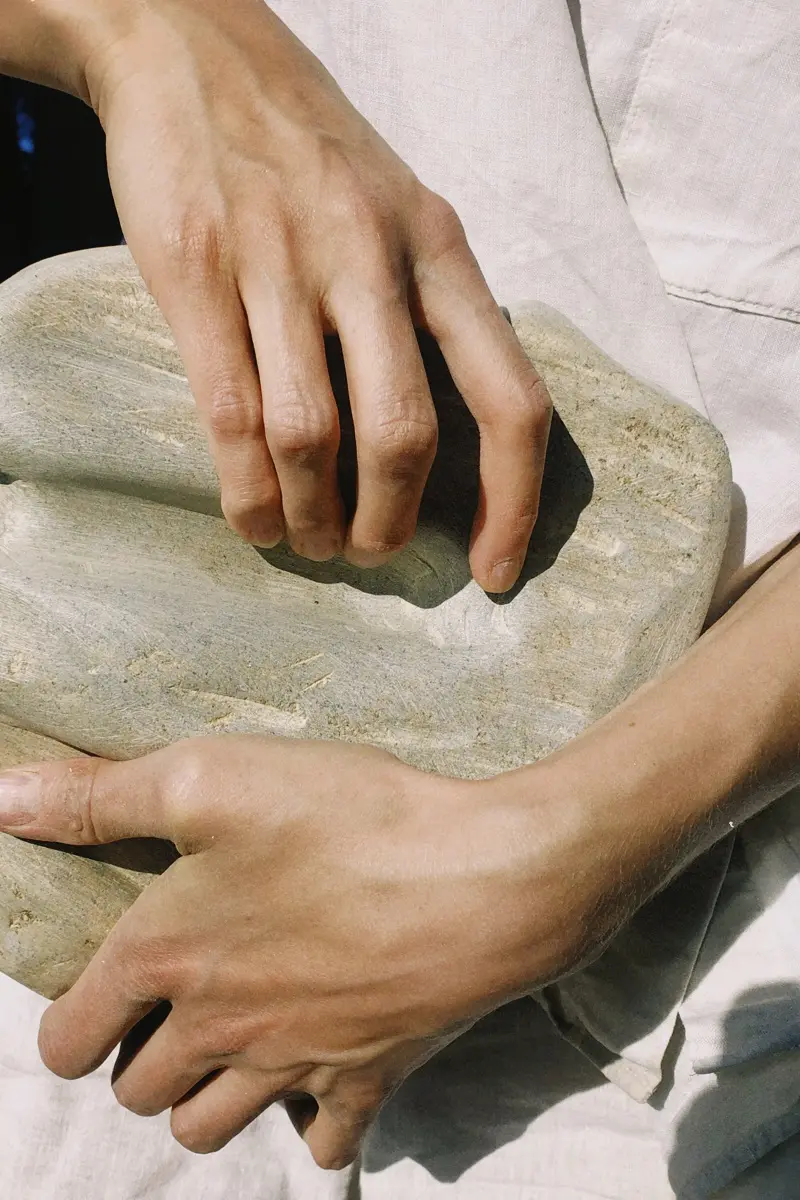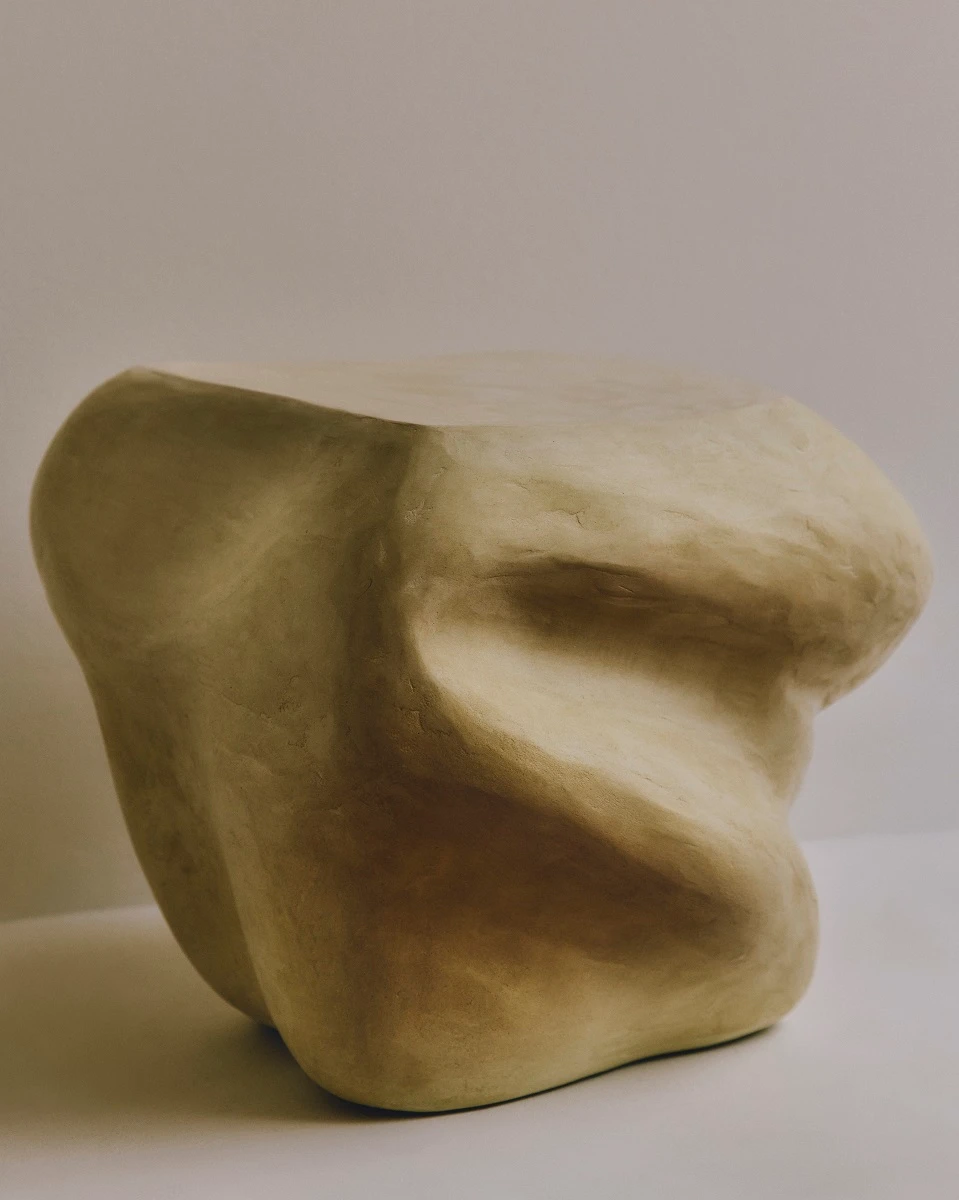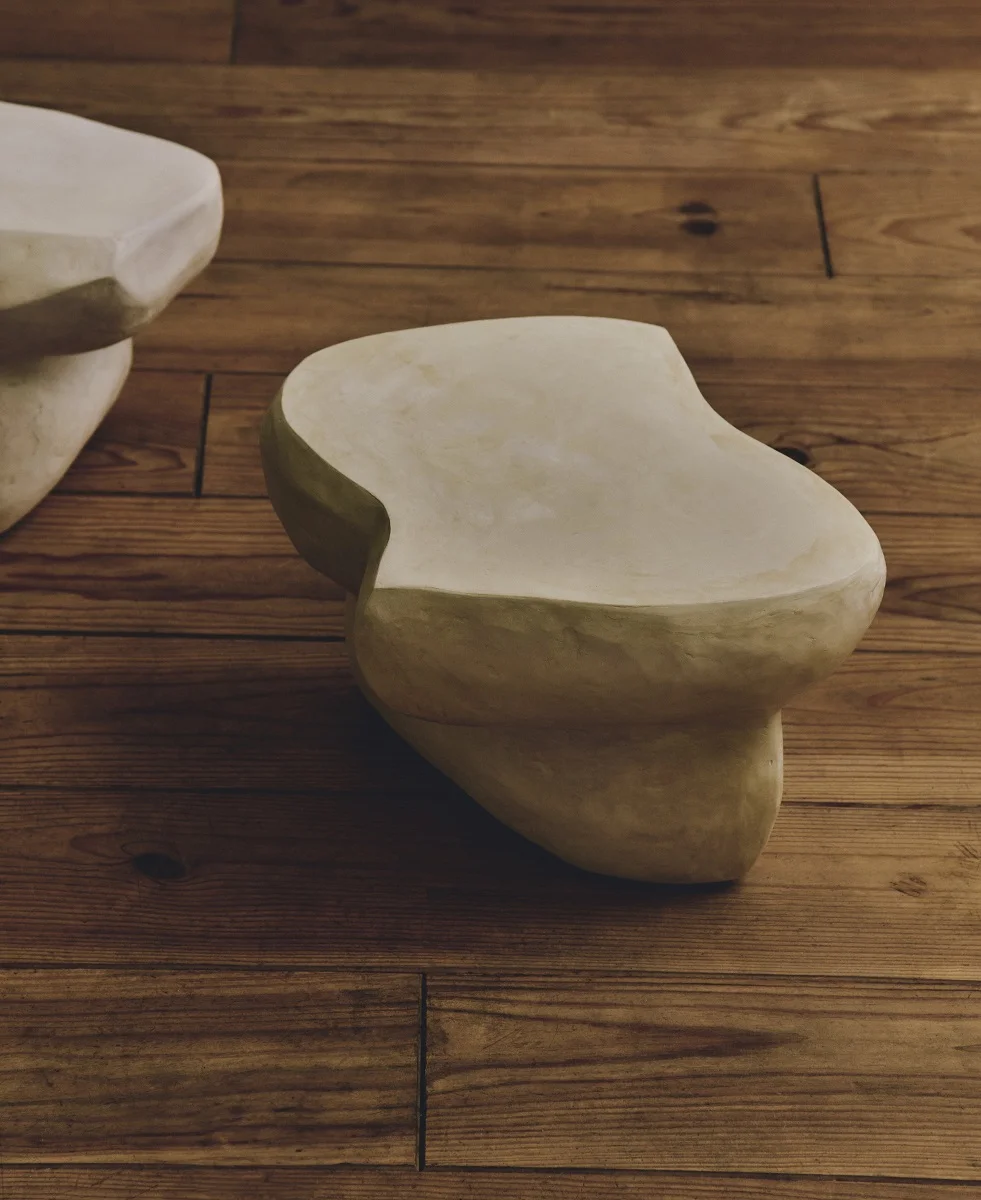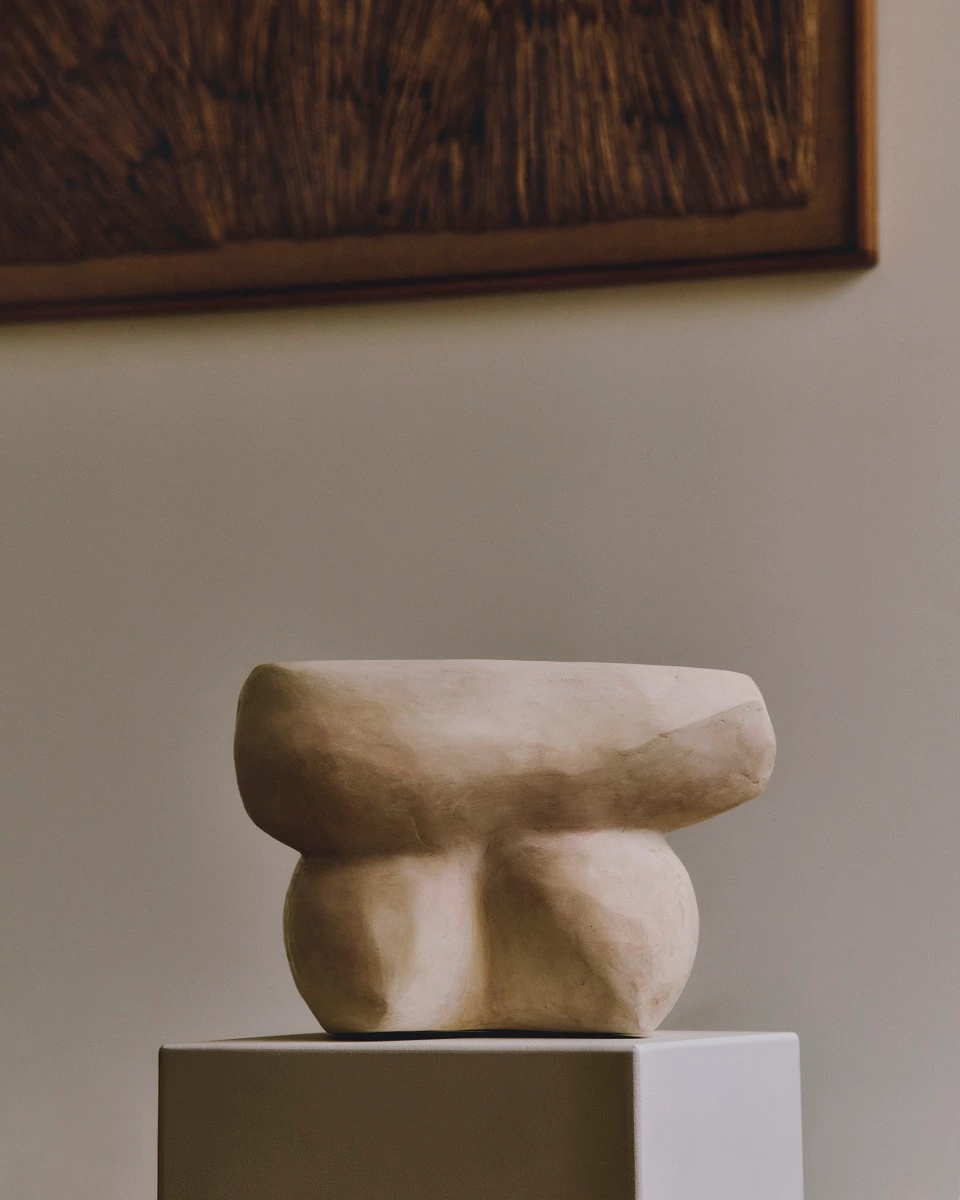Yasmin Bawa sculpts with hemp
- Juliette Sebille
- 12 nov. 2024
- 5 min de lecture
Dernière mise à jour : 9 juin
WEAVING, KNOTTING, TWISTING... YASMIN BAWA REINVENTS THE CRAFT OF WORKING WITH HEMP. IN HER HANDS, THE SCULPTOR MODELS IT LIKE PLASTER, SHAPING MONOLITHIC FORMS WITH DELICATE CURVES. THIS MATERIAL, WHICH SHE REFERS TO AS 'HEMPCRETE', IS HANDCRAFTED FROM MULCH, LIME, AND CLAY. STURDY YET LIGHT, IT LENDS ITSELF TO SMOOTH OR TEXTURED FINISHES, WHICH SHE CREATES IN ALL SHADES OF NATURAL PIGMENTS. A WHOLESOME PRACTICE THAT ECHOES HER NEW LIFE ROOTED IN THE ARDÈCHE COUNTRYSIDE (SOUTH OF FRANCE).
What brought you to making objects, furniture, and installations?
I am drawn to the way objects interact with their environment and the tactile experiences they can offer. My practice has always been driven by a deep connection to materiality and space. It began with an exploration of sculpture, but I quickly found myself blurring the lines between art and design. I think of my pieces as not just functional objects, but as forms that communicate stories or emotions. They reflect my interest in texture, nature, and the human experience.
Could you share the story behind the studio, as well as your personal background?
My path to establishing my own studio practice was far from linear. I come from a multidisciplinary creative background, having studied fashion with a focus on tailoring and knitwear. After that, I worked at Acne Studios in Stockholm as a fashion accessories designer, where I primarily focused on shoes but also contributed to designing bags, hats, belts, and small leather goods. Through my experiences in various creative fields, I discovered that working directly with my hands and manipulating raw materials was where I felt most connected to my craft.
My personal background is also quite diverse. My father is Indian, my mother is British-American, and I grew up between California and Edinburgh. As an adult, I have lived in London, Stockholm, Berlin, and now in the south of France. This transient lifestyle has undoubtedly shaped my work, which currently explores themes of identity, belonging, and the impermanence of existence.
What role can art and design play in raising awareness about current issues
Art and design have a unique ability to communicate beyond words. They engage people on a visceral level, creating connections that can provoke thought, conversation, and action. For me, it became clear that the objects we surround ourselves with—and the processes behind them—carry significant weight in terms of their environmental impact. That realisation was the turning point. I started to think about sustainability not just as a goal, but also as a responsibility.
How has this opened up other avenues for you?
The need for change became apparent during my early explorations with materials. Working with concrete and other industrial materials, I began to feel a disconnect between what I was creating and my values. It led me to search for alternatives, and that is when I discovered hempcrete. Hemp, as a material, is both ecological and incredibly versatile, which allows me to bridge aesthetics with sustainability. It offers a new approach to design, rooted in responsibility and mindful creation.
The aesthetic of my work is very much tied to its rawness and natural beauty. I lean into the imperfections and organic textures that come from using materials like hempcrete, which gives each piece a unique identity.
From an ecological perspective, hemp is an incredible resource. It is renewable, absorbs more carbon dioxide than most other plants, and requires minimal water to grow. By using it, I am able to reduce the environmental footprint of my pieces without sacrificing the integrity of the design.
In terms of new uses and imaginaries, I aim to challenge traditional views of furniture and sculpture. My hope is that these pieces spark dialogue about sustainability and materiality, pushing forward new ways of thinking about design in our daily lives. I want people to reconsider the spaces they inhabit and the objects they engage with, questioning where they come from and how they impact the world.

Apart from sustainability, how do you balance technique, functionality, and artistry in your work?
Balancing technique, functionality, and artistry is at the core of my practice. For me, the key is ensuring that no one aspect dominates. Each piece begins with an idea that merges form with purpose. I view functionality as an extension of the art—rather than a limitation, it informs the design and enhances the narrative. Technique, on the other hand, is about honouring the material and understanding its capabilities. My goal is to create work that feels like a seamless fusion of artistry and functionality, where each element enhances the other.
Could you tell us about your creative process?
My creative process is quite intuitive. It often begins with research, exploring textures and materials that resonate with the natural world. Influences come from a variety of places—architecture, mythology, astrology, traditional building techniques, and even the concept of wabi-sabi, which embraces the beauty of imperfection.
I am deeply inspired by organic forms, the imperfections in nature, and how they translate into human-made objects. This can be seen in the way I work with raw, natural materials like hempcrete, which allows for a tactile, almost sculptural approach. My research is an ongoing practice of observing how materials behave and how they can be manipulated while maintaining their ecological integrity.
How are you pushing the boundaries of materials?
I’m particularly interested in reimagining how materials like hempcrete—typically seen as industrial —can be used in more delicate, sculptural forms, by working with its raw texture and experimenting with techniques. When it comes to techniques, I am committed to traditional craftsmanship but also to innovation, in a constant dialogue between myself and the material.
I challenge forms by allowing materials to behave naturally but also guiding them toward unexpected outcomes. For example, with hempcrete, I test its limits in terms of malleability, pushing it into curves and irregular shapes that are not usually associated with concrete-like materials. I explore the tension between rigidity and fluidity, playing with organic lines and 3D volumes that feel more like sculpture than functional design.
I try to create work that feels alive, that has a sense of movement or growth, even when it is stationary. The interplay of light and shadow on these surfaces adds another layer of depth, almost as if the object is evolving with its environment. Each piece has the potential to shift perspectives depending on how you interact with it.
What about your most recent work and upcoming projects?
Recently, I have been reflecting on the transition from living and working in Berlin to settling in rural France. This change of environment has had a profound effect on my creative process. Being closer to nature has allowed me to slow down and reconnect with the raw, organic materials that have always inspired my work.
I have recently launched a small series titled Serene Reflections with Galerie Objet Inanimé in Marseille. The series draws inspiration from the sublime Ardèche Mountains, visible from my studio windows.
Looking ahead, I am thrilled to be preparing for a solo show at Sainte Anne Gallery in Paris, opening on November 14th 2024. This exhibition will showcase some of my most experimental work yet and will allow me to explore deeper themes of materiality and sustainability that are central to my practice.
Moving into 2024 and 2025, I plan to continue expanding this body of work, particularly focusing on large-scale pieces designed to engage both public and private spaces. I am also excited to explore more collaborations with galleries and architects, integrating my sculptural work into different environments.
••
Written by © Juliette Sebille
Photo courtesy Yasmin Bawa
Portrait by © Anna Malmberg photographer
Sculptures photos 6, 9, 11 & 12 © Mathilde Hiley, courtesy Galerie Objets Inanimés

